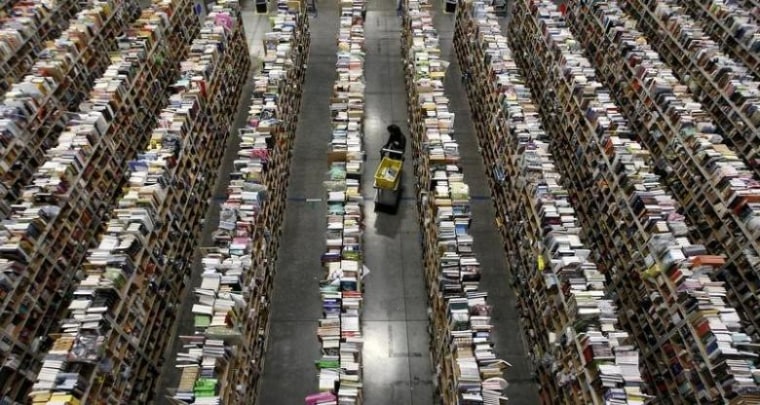Ecommerce is hardly a new story — Amazon is more than 20 years old, after all — but this year’s holiday shopping season represents what analysts say is a watershed moment in our shift from shelves to screens.
The implications are promising for retailers that have managed to cater to shoppers where and whenever they want to buy, but stores that haven’t managed to master the digital divide are going to be in trouble.
Last year, eMarketer found that online sales totaled nearly $81 billion, or about 9 percent of the total $857 billion in overall retail spending in November and December. This year, online sales are expected to hit nearly $95 billion, nearly 11 percent of the estimated total.
Consulting firm Deloitte uncovered an even bigger shift in a new study, which estimated this year’s holiday spending to hit the trillion-dollar mark (it also includes January in its calculations).
More importantly, Deloitte found that shoppers plan to spend an average of 47 percent of their holiday shopping budget online, exactly equal with the percentage they plan to spend in physical stores, and 35 percent of that online spending will be done on computers, along with 12 percent on smartphones and tablets.
Now, people are using their phones not just to look up prices or product reviews, but to actually make purchases.
“It’s an important tipping point for the industry,” said Rod Sides, vice chairman for Deloitte’s retail distribution practice. “What we’re finding is during the holidays, the ease of shopping online takes some pressure off shoppers… I think we are undergoing a pretty rapid change, as people get more comfortable with buying online,” he said.
“This is going to be a bit of an evolutionary year,” said Yory Wurmser, ecommerce analyst at eMarketer.
“Last year was a real turning point in the way people used mobile,” he said. “In the past, it’s been primarily a consideration tool,” but now people are using their phones not just to look up prices or product reviews, but to actually make purchases.
“They’re starting to buy and they’re increasingly comfortable buying,” he said, thanks to bigger, higher-resolution phone screens, better payment systems and user interfaces that make transactions more seamless.
Although digital and mobile commerce really took off among younger shoppers, older generations have caught up, said Natalie Kotlyar, national director of the consumer business industry group at BDO. “There is a trend now with even the older generation Baby Boomers becoming a lot more sophisticated and going into the ecommerce space,” she said.
Some Risks Remain
Of course, the digital domain can be fraught with peril for retailers and customers, as well. “There’s always a risk related around ecommerce,” Kotlyar said. A widespread computer problem, either confined to one retailer or as part of a broader outage such as the DDoS attack on domain host company Dyn last month, could cause a retailer to lose millions.
Related: Who Shut Down the Internet?
And delivery to customers’ homes or workplaces is only convenient if the merchandise actually arrives as promised. “If we have perfect weather, maybe the risk isn’t so great,” Sides said, but he pointed out Mother Nature doesn’t always play along. Three years ago, a rush of holiday orders combined with bad weather left UPS and FedEx scrambling, and customers who didn’t get their gifts by Christmas fuming.
Retailers also won’t abandon brick-and-mortar entirely because physical stores still do have a role to play, experts say. Deloitte’s research found that two-thirds of shoppers will practice what analysts call “webrooming;” that is, checking out an item online before visiting a store to purchase it, and half will do the reverse, visiting a store to see an item before researching and purchasing it online.
As customers come to expect fast, free shipping and equally painless returns, Michael Lasser, senior equity research analyst at UBS, said a network of storefronts gives old-school retailers a distributional leg up.
“What traditional brick-and-mortar retailers have is stores that are located in close proximity to population centers,” he said. “They’ll start to balance the playing field,” he said.
Black Friday Not a Turkey
Today, more stores and malls have backed off experiments in recent years towards opening earlier and earlier on Thanksgiving Day itself. Experts say this means in-store Black Friday doorbusters aren’t likely to go away anytime soon, since retailers still depend on foot traffic for incremental market share and impulse buys.
“What they really want is to drive traffic to stores to get the consumer to spend, to capture as much of that spending as possible,” Lasser said, which more are beginning to do by promoting features like in-store pickup and accepting returns on orders placed online at brick-and-mortar locations.
Now that shoppers have been primed to do holiday shopping as soon as they’ve tucked into their turkey, stores have to thread a needle between trying to get more customers through their doors and not wanting to alienate those who want to shop without leaving their sofas.
“It opens up a window of opportunity for ecommerce,” Kotlyar said.
